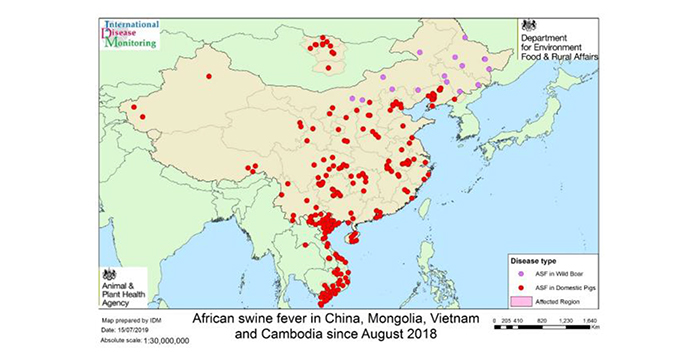A year has now passed since China’s Ministry of Agriculture and Rural Affairs confirmed its first African swine fever (ASF) outbreak in Liaoning province. But what has happened in the last 12 months?

The country has reported over 140 outbreaks, four of which have been since the end of June. All provinces in China have been affected and more than 1.16 million pigs have been culled in an effort to stop the spread of the disease. It has been estimated that as many as half of China’s breeding herd have either died because of or have been culled due to ASF – so the figures released might be underestimating the real situation.
It is not only the producers affected in China, sales of vaccines, feed additives and genetics have fallen with feed mills already having closed.
The Vice Minister of the Ministry of Agriculture and Rural Affairs for China (MARA) stated in early July that the epidemic had slowed, despite the situation still being complicated and difficult. MARA is providing temporary assistance and subsidies are being paid quickly to pig farmers asked to mandatory cull their herd. They have put movement restrictions in place in Epidemic zones but these are being lifted where no new cases have been reported for six weeks.
ASF has now spread from China into Hong Kong, Cambodia, North Korea, Mongolia, Laos and Vietnam, across which almost five million pigs have either died or been culled due to the spread of this disease.



